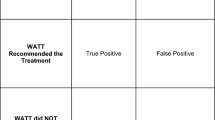Abstract
Purpose
This paper aims to illustrate an example of how to set up a work injury database: the Smart Work Injury Management (SWIM) system. It is a secure and centralized cloud platform containing a set of management tools for data storage, data analytics, and machine learning. It employs artificial intelligence to perform in-depth analysis via text-mining techniques in order to extract both dynamic and static data from work injury case files. When it is fully developed, this system can provide a more accurate prediction model for cost of work injuries. It can also predict return-to-work (RTW) trajectory and provide advice on medical care and RTW interventions to all RTW stakeholders. The project will comprise three stages. Stage one: to identify human factors in terms of both facilitators and barriers RTW through face-to-face interviews and focus group discussions with different RTW stakeholders in order to collect opinions related to facilitators, barriers, and essential interventions for RTW of injured workers; Stage two: to develop a machine learning model which employs artificial intelligence to perform in-depth analysis. The technologies used will include: 1. Text-mining techniques including English and Chinese work segmentation as well as N-Gram to extract both dynamic and static data from free-style text as well as sociodemographic information from work injury case files; 2. Principle component/independent component analysis to identify features of significant relationships with RTW outcomes or combine raw features into new features; 3. A machine learning model that combines Variational Autoencoder, Long and Short Term Memory, and Neural Turning Machines. Stage two will also include the development of an interactive dashboard and website to query the trained machine learning model. Stage three: to field test the SWIM system.
Conclusion
SWIM ia secure and centralized cloud platform containing a set of management tools for data storage, data analytics, and machine learning. When it is fully developed, SWIM can provide a more accurate prediction model for the cost of work injuries and advice on medical care and RTW interventions to all RTW stakeholders.
Ethics
The project has been approved by the Ethics Committee for Human Subjects at the Hong Kong Polytechnic University and is funded by the Innovation and Technology Commission (Grant # ITS/249/18FX).



Similar content being viewed by others
References
Madsen AÅ. Return to work after first incidence of long-term sickness absence: a 10-year prospective follow-up study identifying labour-market trajectories using sequence analysis. Scand J Public Health. 2019. https://doi.org/10.1177/1403494818821003.
Hartvigsen J, Hancock MJ, Kongsted A, Louw Q, Ferreira ML, Genevay S, et al. What low back pain is and why we need to pay attention. Lancet. 2018;391(10137):2356–2367.
Leigh JP, Cone JE, Harrison R. Costs of occupational injuries and illnesses in California. Prev Med. 2001;32(5):393–406.
Young AE, Wasiak R, Roessler RT, McPherson KM, Anema JR, van Poppel MN. Return-to-work outcomes following work disability: Stakeholder motivations, interests and concerns. J Occup Rehabil. 2005;15(4):543–556.
Loisel P, Buchbinder R, Hazard R, Keller R, Scheel I, van Tulder M, et al. Prevention of work disability due to musculoskeletal disorders: the challenge of implementing evidence. J Occup Rehabil. 2005;15(4):507–524.
Franche RL, Baril R, Shaw W, Nicholas M, Loisel P. Workplace-based return-to-work interventions: optimizing the role of stakeholders in implementation and research. J Occup Rehabil. 2005;15(4):525–542.
Cheng ASK, Loisel P, Feuerstein MR. Return-to-work activities in a Chinese cultural context. J Occup Rehabil. 2011. https://doi.org/10.1007/s10926-010-9272-2.
Williams RM, Westmorland M. Perspectives on workplace disability management: a review of the literature. Work. 2002;19:87–93.
OECD. Transforming disability into ability: polices to promote work and income security for disabled people. Paris: OECD; 2003.
WorkSafe Victoria. Employers’ return to work obligations. https://www.worksafe.vic.gov.au/planning-your-return-work. Assessed 1 July 2019.
Hamet P, Tremblay J. Artificial intelligence in medicine. Metabolism. 2017;69S:S36–S40.
Akbarzadeh Khorshidi H, Hassani-Mahmooei B, Haffari G. An interpretable algorithm on post-injury health service utilization patterns to predict injury outcomes. J Occup Rehabil. 2019. https://doi.org/10.1007/s10926-019-09863-0.
Abhari S, Niakan Kalhori SR, Ebrahimi M, Hasannejadasl H, Garavand A. Artificial intelligence applications in type 2 diabetes mellitus care: focus on machine learning methods. Healthc Inform Res. 2019;25(4):248–261.
Milea D, Singhal S, Najjar RP. Artificial intelligence for detection of optic disc abnormalities. Curr Opin Neurol. 2019. https://doi.org/10.1097/WCO.0000000000000773.
Gross DP, Steenstra IA, Shaw W, Yousefi P, Bellinger C, Zaïane O. Validity of the Work Assessment Triage Tool for selecting rehabilitation interventions for workers’ compensation claimants with musculoskeletal conditions. J Occup Rehabil. 2019. https://doi.org/10.1007/s10926-019-09843-4.
Na KS, Kim E. A machine learning-based predictive model of return to work after sick leave. J Occup Environ Med. 2019;61(5):e191–e199.
Lee J, Kim HR. Prediction of return-to-original-work after an industrial accident using machine learning and comparison of techniques. J Korean Med Sci. 2018;33(19):e144.
Eddy SR. What is a hidden Markov model? Nat Biotechnol. 2004;22(10):1315–1316.
Reker D, Katzenbeisser S, Hamacher K. Computation of mutual information from Hidden Markov Models. Comput Biol Chem. 2010;34(5–6):328–333. https://doi.org/10.1016/j.compbiolchem.2010.08.005.
Han K, Wen H, Shi J, Lu KH, Zhang Y, Fu D, et al. Variational autoencoder: an unsupervised model for encoding and decoding fMRI activity in visual cortex. Neuroimage. 2019;198:125–136. https://doi.org/10.1016/j.neuroimage.2019.05.039.
Lopez-Martin M, Carro B, Sanchez-Esuevillas A, Lloret J. Conditional variational autoencoder for prediction and feature recovery applied to intrusion detectin in IoT. Sensors. 2017. https://doi.org/10.3390/s17091967.
Funding
This project was funded by Innovation and Technology Commission (Grant Number ITS/249/18FX).
Author information
Authors and Affiliations
Corresponding author
Ethics declarations
Conflict of interest
The authors have no conflict of interest to declare.
Ethical Approval
All procedures performed in this project were in accordance with the ethical standards of the institutional and/or national research committee and with the 1964 Helsinki declaration and its later amendments or comparable ethical standards.
Informed Consent
Informed consent was obtained from all individual participants included in the project.
Additional information
Publisher's Note
Springer Nature remains neutral with regard to jurisdictional claims in published maps and institutional affiliations.
Rights and permissions
About this article
Cite this article
Cheng, A.S.K., Ng, P.H.F., Sin, Z.P.T. et al. Smart Work Injury Management (SWIM) System: Artificial Intelligence in Work Disability Management. J Occup Rehabil 30, 354–361 (2020). https://doi.org/10.1007/s10926-020-09886-y
Published:
Issue Date:
DOI: https://doi.org/10.1007/s10926-020-09886-y




